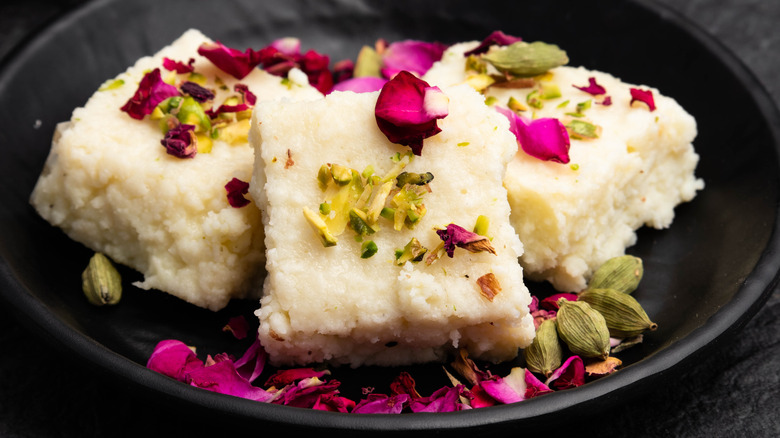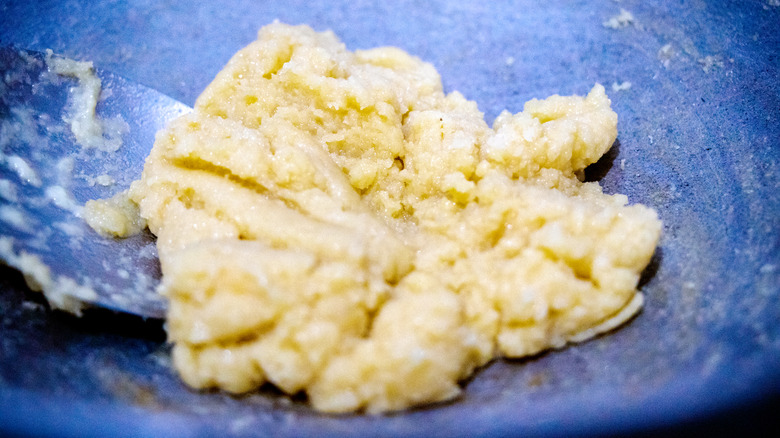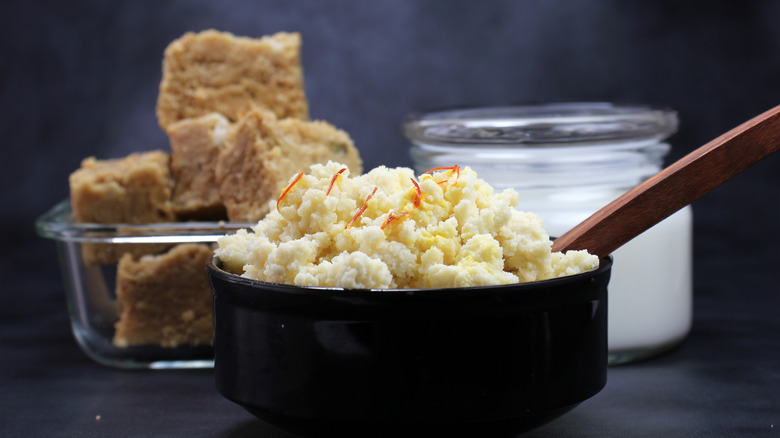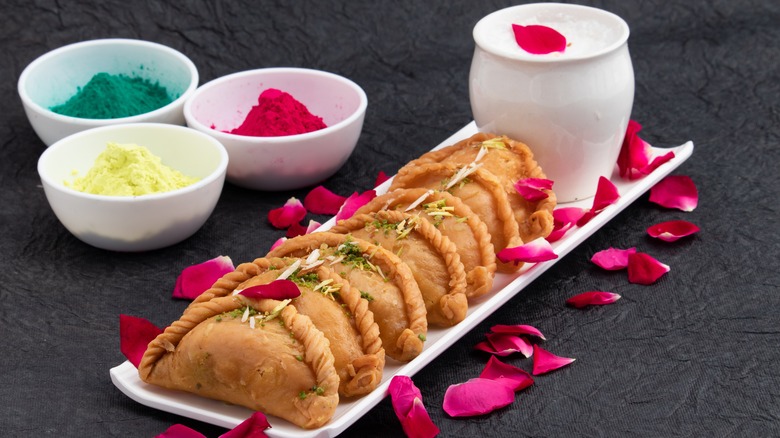How To Use Mawa, The Magic Addition For Bakery-Style Desserts
Let's face it: baking is hard. Even the most seasoned bakers often find themselves wondering why their meticulously-made baked goods just didn't turn out right. Adding, substituting, or changing the slightest amount of certain ingredients can have a big impact on the final results. And no matter how much practice you have, you may still find yourself struggling to achieve that perfect bakery-style dessert.
However, for all the don'ts, you've also likely compiled a list of dos in your mind. Whatever list of baking hacks you've developed, we'd like to add one more thing to that list to help you achieve your best results yet: mawa.
This ingredient will magically transform all your baking creations into seemingly professionally-made delectable desserts. The South Asian ingredient mawa, also known as khoa or khoya, has long been a staple in baked goods across India, Pakistan, and other nearby nations. This dairy product is known for giving cakes, fudge, cookies — whatever dessert it's added to, really — a luxurious, rich texture. So, if you're a fan of (insert all desirable adjectives here) baked goods, then you'll want to learn more about this underrated ingredient.
What is mawa?
Mawa is a dairy product made of the remaining milk solids after whole milk (cow's or buffalo's) is heated and the entirety of the liquid is boiled off. To technically be considered mawa, the remaining solids must have 30% milkfat or more.
There are actually three types of mawa: chickna mawa, danedar mawa, and batti mawa. These three varieties of mawa are discernible by their moisture content, with chickna mawa being the most moist and batti mawa being the hardest. Each is preferred for different types of desserts, and they can be used in different ways. For example, batti mawa is so firm, it can be grated over a sweet for added flavor.
However, before you start diving into making your new and improved baking creations, you have to learn how to make the mawa first. It can be made deliciously from scratch, but, if straining your forearm muscles just isn't for you, there are other ways you can obtain that rich, sought-after texture in your baked goods.
How mawa is made
While there are quicker ways to make mawa, like a quick ricotta cheese method that uses a microwave or making an instant version with milk powder, the traditional way is much more time-consuming. And, there is a lot of effort that goes into only getting a small amount of product in return. However, your laborious efforts will be rewarded with a fresher-tasting mawa that will elevate your desserts.
The first step is to boil full-fat milk, and after a while it will take on a viscous consistency. When it reaches this point, it is stirred vigorously for a few minutes at a time; the milk will eventually reduce and become more clumpy. The frequent stirring and monitoring continues until the liquid completely evaporates from the milk. The remaining solids are then cooled and hardened, with the entire process taking less than an hour, although it can be much longer. This may not sound like a while, but your arm muscles will likely be asking you why you didn't opt for one of the quicker methods.
For those looking for the ultimate shortcut, there are packages of dehydrated mawa in a powder form (not to be confused with regular milk powder) available for sale online and in some stores. All these packages require is to be rehydrated with some whole milk. Feel free to try out the method that sounds best for you, but whatever you choose, your baked goods will be thanking you.
How to use mawa
There are lots of traditional South Asian treats that require a dose of mawa mixed in. Desserts like gujiya (fried dumplings stuffed with mawa and an assortment of nuts and dried fruit), mawa anjeer rolls (a rolled sweet made with dried fruit and nuts), and kala jamuns (sugary, saffron-flavored spheres) are a few of the many sweets that are typically created with this milky ingredient. These desserts often make an appearance during holidays or special events, and this is fitting as their luxurious nature matches the celebratory atmosphere.
However, mawa can also be added to just about any one of your favorite desserts that call for eggs or butter, as these can be partially replaced with mawa. Whether you're making a chocolate cake, homemade cookies, or some fresh bread, mawa will help make them more moist, milkier in taste and texture, and give them that quintessential bakery-style feel.
If you don't happen to have a sweet tooth, you can still try out mawa in your kitchen by mixing it into certain curries; the creaminess will pair well with the spicy and robust ingredients in the dish. While other traditional curries opt to include cashew cream or coconut cream, the benefit of including mawa is it obtains a richer taste and buttery consistency. This is typically done in the northern parts of India, but you can try it out for yourself right at home.



